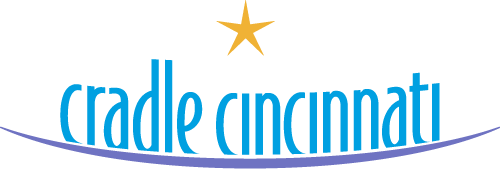Equity is Doable, Part 5: Shifting Power Dynamics on a Team and in the Community – A Blog Series by Ryan Adcock
At Cradle Cincinnati, we believe that if Cincinnati’s employers and service providers are more equitable, our birth outcomes will be more equitable too. Conversations about racial equity are often filled with academic jargon and can feel more philosophical than practical. This is the fifth in a series of posts where we will outline real life decisions leading to positive change.
Greater Cincinnati Foundation has been leading a region-wide conversation about creating a more equitable playing field. Included in their strategy is a focus on improving the economic reality for Black women in Cincinnati and an emphasis on training through a partnership with bi3 and the Racial Equity Institute. We asked Dora Anim, COO of the Greater Cincinnati Foundation, what the details of equity leadership look like up close.
What work has been done internally at the Greater Cincinnati Foundation as you prioritize equity?
For us, equity is about a shifting in power: those who drive decisions, those who dictate what should happen or decide what success looks like should be those closest to the issues. We believe there is a parallel path that needs to happen at organizations with “in house” work and external leadership. There is too much work to be done in both spheres. Recently, we’ve really been doing a lot of work internally to improve the experience for people of color who work at Greater Cincinnati Foundation.
We’ve decided to split our conversations up into “affinity” groups by race. When we get our staff together and everyone speaks, are we really speaking our truth? It has been really powerful and eye opening to create space for our staff to gather by race in three affinity groups – Black, White and non-Black people of color with experienced facilitators. We call our White affinity group ‘allies’. It’s allowing us to create points of connection for people with shared identity to express their hopes and fears with no judgment.
I like to put it this way: we have work to do together as a staff, but we also have work to do separately. Through that space, we are hearing things we never would have realized with everyone together – how we assign work, how we celebrate success, how we measure success, how people feel seen and heard, and how all of that relates to equity. I highly recommend affinity group conversations for teams. We need to create space for shared identity groups to connect. We all need that space to recharge and build the courage needed to be truly authentic.
What advice would you have for an organization looking to hold affinity groups?
Spend a lot of time getting people to understand why you are doing it. There is a tendency, especially for the White group, to get very defensive. Good, neutral facilitation is key as well – with clear purpose.
There were a lot of surprises that came up. The White staff was blown away at how uncomfortable they felt. They expressed being afraid to say the wrong thing and also feeling the urge to always “fix” racial injustices. The non-Black people of color group has said that they frequently feel like they don’t have a voice. And the Black group is constantly misunderstood and trying to fit in to a White narrative – to look and sound “professional.” The common theme among all the groups is fear. All of this is rooted in fear.
And we started by not having the executive team participate in the groups to avoid some of the power dynamics.
Is there any learning for you personally that has come out of this work?
Hiring comes to mind. Hiring has dramatically changed for us in general during our equity journey. There is an analytical tool called Culture Index that has been very helpful. It helps us fit the right person to the right job and forces us to be more strategic about hiring and rely less on gut instinct. That way we get someone who is set up for success from day one.
We were recently Queen City Certified, an employer certification related to gender equity. That, in combination with our racial equity work, means we are bringing much more intentionality to hiring. Every interview panel now must now have at least two people of color on it. And every pool of candidates for a position must be at least 50% people of color. That includes everyone who is phone screened.
“We couldn’t find someone” is no longer an excuse. If you can’t find diversity, you likely aren’t posting positions in the right places. We, for example, now partner with a networking group called Black Achievers that now includes more than 4,000 people of color. It’s under the leadership of Michael Moore and is a great place to post jobs and leads to high quality candidates.
Who is doing community driven change well?
I’ll lift up the Women’s Fund who have really made some bold moves. They partnered with Cohear to form an advisory group of women with lived experience. And they also stepped back and recognized that their decision-making board was mostly White women and mostly executives – so now they’ve invited community residents to that table to make those decisions about funding. They are truly shifting power to those in the community.
